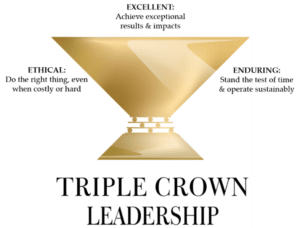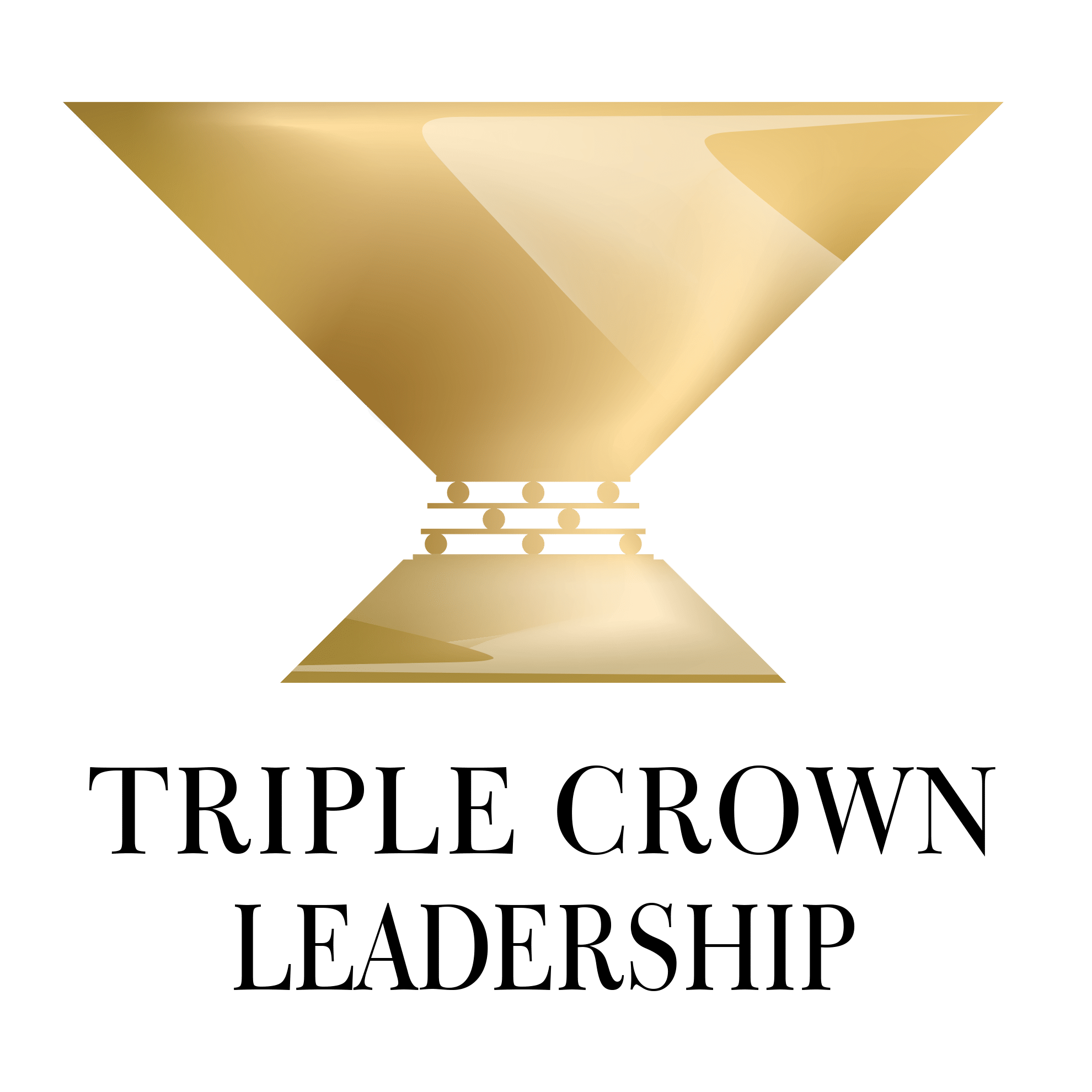Article Summary:
Frequently, we hear from job seekers that it’s hard to find good organizations. How to find a great place to work? A step-by-step guide.
+++
We’ve written extensively about what we call “triple crown organizations,” ones that are excellent, ethical, and enduring. These organizations are great places to work. Though they aren’t the norm today, we believe they’re the wave of the future.
If you get the opportunity to work in such an organization and experience the pride, joy, sense of purpose, and relationships with colleagues, you’ll never want to go back to a less fulfilling place.
Conversely, if you work in a toxic organization, or have unethical bosses, the risk is high that you’ll be infected with their poison. Your context exerts a profound influence on your outlook and experience of the world.
Frequently, we hear from job seekers that it’s hard to find good organizations. It’s not easy to gauge an organization’s culture from the outside. All too often, organizations have puffed-up their image, burnished their brand, and virtue-signaled their accomplishments. Meanwhile, their reality is different. How do you find the truth about an organization before joining? It takes work, but it’s well worth the effort, as it pays long-term dividends.
“Should you really be looking for a company you will love working for? And, what would you look for? You’d want to find a company you love being around and spending time with. A company that helps you move forward. A company you have chemistry with. A company that makes you better. A company you can have fun with. A company that shares some of your dreams—even though it has some if its own. A company you can respect…. Finding a company you can love working for can have a profound impact on your lifetime happiness.” -Dharmesh Shah, Founder and CTO, HubSpot
The Signs of a Great Organization
What is a triple crown organization? Such an organization is excellent, ethical, and enduring:
- Excellent: achieving exceptional results and positive impacts for all stakeholders.
- Ethical: doing the right thing even when it’s costly or hard.
- Enduring: standing the test of time and operating sustainably.

Triple crown organizations achieve exceptional results in an honorable and principled fashion. They avoid harming their other stakeholders in the pursuit of short-term results.
Triple crown organizations don’t burn their people out. They’re financially sustainable. Triple crown organizations don’t harm their communities or degrade the environment. They create lasting value for all their stakeholders.
Triple crown organizations have great people with both head and heart. They’re deeply committed to an inspiring shared purpose, values, and vision. They have a great organizational culture, and they’re aligned.
How to find such an organization?

Leadership Derailers Assessment
Take this assessment to identify what’s inhibiting your leadership effectiveness. It will help you develop self-awareness and identify ways to improve your leadership.
Rankings Sites
A good place to start is with rankings sites. Consider what’s most important to you (e.g., culture and workplace, sustainability, ethics, etc.) and choose a few rankings sites that focus on those factors. There are many to choose from, including:
- “America’s Most Trustworthy Companies” (Newsweek)
- “America’s Best Employers by State” (Forbes)
- “100 Best Companies to Work For” (Fortune)
- “50 Best Places to Work” (Outside), focusing on workplace flexibility, time off, generous health benefits, and healthy work-life balance
- “Top Workplaces for Work-Life Flexibility” (Top Workplaces)
- “World’s Most Admired Companies” (Fortune)
- “World’s Most Ethical Companies” (Ethisphere)
- “World’s Most Sustainable Companies” (Corporate Knights)
- “World’s Best Largest Employers” (Forbes)
- “Exceptional Workplace Awards” (Gallup)
- “Most Trustworthy Public Companies” (Trust Across America)
- “Just Business Rankings” (Just Capital), focusing on companies that contribute across different stakeholders
Several of these sites (including Top Workplaces and Just Capital) have searchable rankings, with categories like industry, region, city, state, and more.
State and local Chambers of Commerce sometimes have lists of best places to work or other awards. Sometimes local organizations create city lists, such as Built in Chicago’s “100 Best Places to Work in Chicago,” focusing on startups and tech companies.
Note that none of these resources are complete on their own. Sometimes they’re influenced by special interests, advertising, or membership dues. Often the data are self-reported. But ranking sites can provide helpful initial indicators.
Deeper Web Research
Once you’ve found some candidates, here are tips on probing deeper via the web:
- Review the organization’s web site carefully. Conduct a web search on the organization, looking for news features, awards, scandals, and more.
- Review their annual report (usually found on their web site). Are they reporting only financial performance or also metrics on other stakeholders such as customers, workers, sustainability initiatives, and more. (For public companies that you’re keenly interested in, consider also getting their 10K reports. These include the firm’s history, structure, financial statements, executive compensation, risk factors, and more.
- Conduct web and social media searches on the senior management team and/or board members. See if the CEO has a blog or regular social media engagement.
- Visit Glassdoor for current and former workers’ ratings on organizations as well as worker reviews on leadership, culture, pay, benefits, diversity, and more.
- Check out their customer reviews online to see what people are saying about their interactions with the organization.

Alignment Scorecard
When organizations aren’t aligned, it can reduce performance dramatically and cause frustration and dysfunction. With this Alignment Scorecard, you can assess your organization’s level of alignment and make plans for improving it.
Personal Network and Outreach

- Ask your network about the organizations you’re considering. Use the “three-circle approach,” a variation of a process we recommend for checking references. When speaking to someone in your network, ask them if they know anyone else who could give you information on the organization. Then contact that person (the second circle). Repeat the process to get to the third circle. That’s where you may get more clarity and depth about what’s really going on in the organization.
- Review the organization’s Company Page on LinkedIn. Search LinkedIn for current and former workers and consider contacting some of them to ask about their experiences with the organization.
- Leverage your university’s alumni resources, if applicable, including the Career Services and Alumni Offices, to see if they have insights, information, or connections.
Personal Visits
- Sometimes you can learn a lot from a visit to an organization. Do they conduct tours or site visits? Might someone take you to lunch on-site? Bob knew a salesman who prided himself on walking through an organization’s premises before he called on his buyer to get the feel of the place, reading what was on the bulletin boards, and chatting with workers in the break rooms. He gained invaluable insights. (Note that with organizational tours, they’ll be putting their best foot forward.)
- When interviewing, pay attention to the kinds of questions they ask (and their responses to your probing questions)—and especially to any small red flags that you sense during the meeting. Ask about things that matter to you (e.g., purpose, values, vision, culture, alignment, work experience, challenges, compensation, worker engagement and turnover, advancement and professional development opportunities, flexibility, trust, fairness, sense of community, diversity, awards, and more. To their great regret, Bob and Gregg have both made the mistake of disregarding the red flags they sensed before joining an organization. Small red flags most often become huge issues later. Pay attention to them.

Personal Values Exercise
Complete this exercise to identify your personal values. It will help you develop self-awareness, including clarity about what’s most important to you in life and work, and serve as a safe harbor for you to return to when things are tough.
Other Tools
- Idealist helps people find jobs, internships, and volunteer opportunities with nonprofit organizations and social impact opportunities.
- Indeed is a job-search tool that helps people find job listings, company reviews, and compensation information.
- ZipRecruiter is a job marketplace that helps organizations and job seekers find each other by matching them up, using artificial intelligence to help find a good fit.
Conclusion
Consider raising your sights for your next job. Shoot for a great job, not just any job.
Few things in your professional life are more important than finding the right organization (and manager) to work for. Look for a place where the people are happy and respected. Where the bosses are people of integrity who care about people and the culture. Consider the percentage of time you spend at work and how that time affects every other part of your life.
Prioritize culture as a key consideration. Look not just for a great culture but one that’s a great fit for you, given your personal values, work style, and preferences.
The investment in finding a triple crown organization that’s a great fit for you is well worth the effort. Good luck on your quest to find it. You won’t regret it.

Reflection Questions
- Are you unhappy at your current organization?
- If so, are you willing to do what it takes to find a great place to work?
- If so, which step will you start on first and when?
Tools for You:
- Leadership Derailers Assessment to help you identify what’s inhibiting your leadership effectiveness
- Personal Values Exercise to help you determine and clarify what’s most important to you
- Alignment Scorecard to help you assess your organization’s level of alignment
Postscript: Quotations
- “Being a great place to work is the difference between being a good company and a great company.” -Brian Kristofek, President and CEO, Upshot
- “There’s no magic formula for great company culture. The key is just to treat your staff how you would like to be treated.” -Richard Branson, Founder, Virgin Group
- “In this ever-changing society, the most powerful and enduring brands are built from the heart. They are real and sustainable. Their foundations are stronger because they are built with the strength of the human spirit, not an ad campaign. The companies that are lasting are those that are authentic.” -Howard Schultz, CEO, Starbucks
- “Take good care of the people, they’ll take good care of the customer, and the customer will come back.” -W. Marriott, Jr., Executive Chairman, Marriott
- “I did not understand when I first became CEO how important culture was. I thought the role of the CEO was vision and strategy for the company, to develop, recruit, retain, and change the leadership team to implement that vision and strategy, and communications. Within a very short time, I realized culture was really how I was enabling all those aspects.” -John Chambers, Executive Chairman at Cisco
- “Culture is not part of the game. It is the game.” -Lou Gerstner, former CEO, IBM

Triple Crown Leadership Newsletter
Join our community. Sign up now and get our monthly inspirations (new articles, announcements, opportunities, resources, and more). Welcome!
+++++++++++++++++
Bob Vanourek and Gregg Vanourek are leadership practitioners, teachers, trainers, and award-winning authors. They are co-authors of Triple Crown Leadership: Building Excellent, Ethical, and Enduring Organizations, a winner of the International Book Awards. Sign up for their monthly newsletter. If you found value in this article, please forward it to a friend. Every little bit helps!


